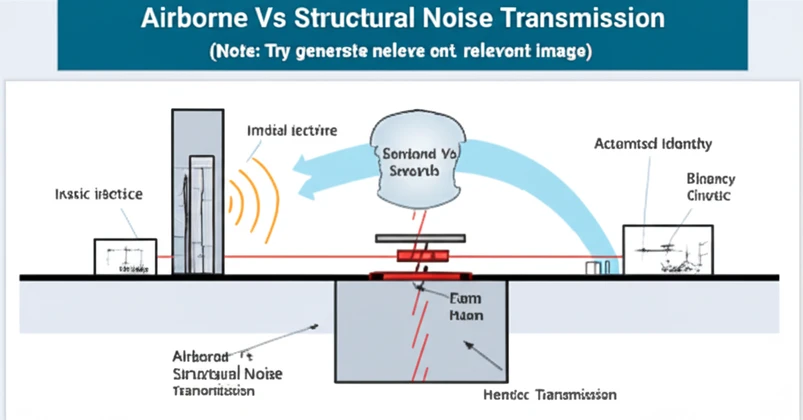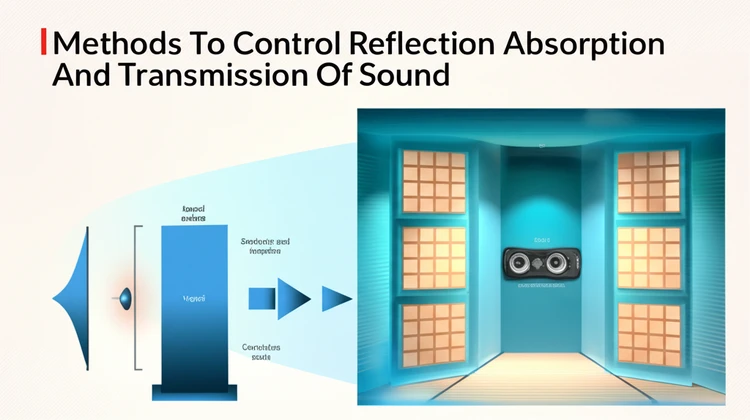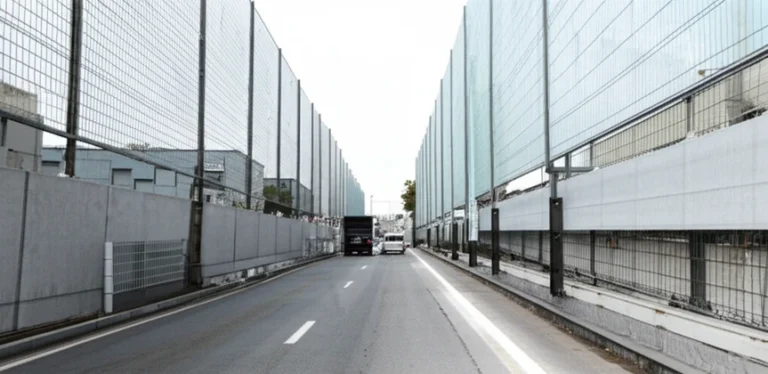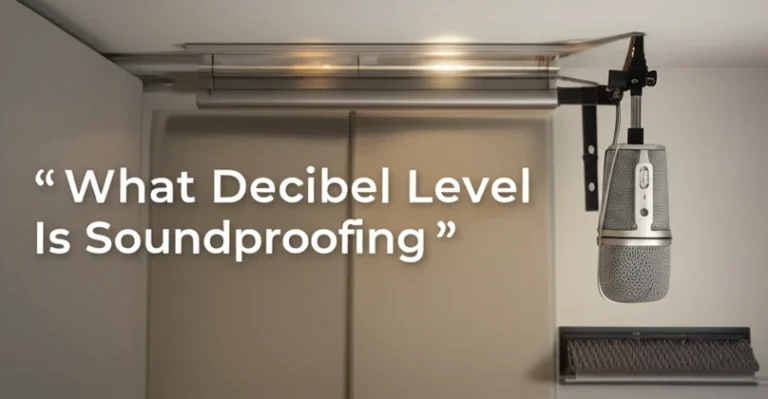
Noise disturbances can significantly impact our daily lives, affecting productivity, sleep, and overall well-being. Effective noise control begins with understanding the fundamental ways sound travels, specifically the distinction between airborne and structural noise transmission. This comprehensive guide delves into the characteristics of each type, offering practical solutions and expert insights to help you create a quieter and more comfortable environment.
Understanding Airborne Noise Transmission
Airborne noise transmission occurs when sound waves, generated by a source, propagate through the air and subsequently pass into adjacent spaces.
This is the most common type of noise we encounter in everyday life, often associated with audible disturbances from nearby sources.
Definition and Characteristics
Airborne noise is any sound that originates from a source and travels through the air. Examples include human speech, musical instruments, barking dogs, traffic noise, and television audio. These sounds typically range from 250 Hz to 2000 Hz.
The sound waves penetrate weak points in building structures, such as thin walls, poorly sealed doors and windows, gaps in construction, and ventilation ducts.
Challenges of Mitigating Airborne Noise
Effectively blocking airborne noise requires materials that can absorb or reflect sound waves. The primary challenge is the ability of sound waves to find and exploit even small openings. Poorly sealed gaps, hollow spaces within walls, and lightweight building materials can amplify the issue, making noise control more difficult.
For instance, a small gap under a door can significantly compromise the sound insulation properties of the entire door assembly.
Understanding Structural Noise Transmission
Structural noise transmission involves vibrations that travel through solid materials like walls, floors, ceilings, and building frames. This type of noise often manifests as low-frequency rumbling, thumping, or physical vibrations. It’s less about audible sound waves in the air and more about the physical energy transferred through the building itself.
Definition and Characteristics
Structural noise is sound that propagates as vibrations through building materials.
Common examples include footsteps, the impact of dropped objects, machinery vibrations, plumbing noises, the operation of HVAC systems, and slamming doors. These sounds are often characterized by lower frequencies, typically below 250 Hz. The vibrations transfer efficiently through rigid structures, such as concrete, wood, or steel, and may even amplify due to the resonant properties of these materials.
Challenges of Mitigating Structural Noise
Unlike airborne noise, structural noise requires strategies that minimize vibration transmission at the source and interrupt its path through the building.
Rigid materials, while strong, readily transmit vibrations. Addressing structural noise effectively often involves decoupling building elements, using damping materials, and adding mass strategically.
Key Differences Between Airborne and Structural Noise
Distinguishing between airborne and structural noise is crucial for effective soundproofing. The differences lie in the source of the noise, how it travels, and how we perceive it.
| Feature | Airborne Noise | Structural Noise |
|---|---|---|
| Noise Source | Generated by sound waves propagating through the air (e.g., voices, music). | Caused by vibrations within solid materials (e.g., footsteps, machinery). |
| Transmission Path | Travels through the air and enters through weak points or openings in structures. | Travels through solid materials, often bypassing air pathways entirely. |
| Typical Frequency Range | Predominantly mid to high frequencies (250 Hz – 2000 Hz and above). | Often dominated by low frequencies (below 250 Hz). |
| Perception | Typically perceived as distinct sounds, such as speech or music. | Often experienced as low-frequency rumbling, thumping, or physical vibrations. |
Identifying the Type of Noise
Accurately identifying the type of noise is the first step towards implementing the right soundproofing solution.
Here’s a more detailed approach:
Step 1: Observe the Noise Source
Identify the origin of the noise. If you can clearly hear voices, music, or traffic, the noise is primarily airborne. If the disturbance feels like a vibration or originates from impacts like footsteps or operating machinery, it’s likely structural.
Step 2: Test Sound Paths
For suspected airborne noise, try temporarily blocking air pathways.
Seal gaps around windows and doors with towels or blankets. A noticeable reduction in noise confirms airborne transmission. For structural noise, feel for vibrations by placing your hand on walls or floors near the suspected source.
If you feel vibration, it’s a strong indicator of structural noise.
Step 3: Use a Sound Level Meter (Optional)
A sound level meter can provide more objective data. These devices measure sound pressure levels (SPL) in decibels (dB) and can often display frequency information. This helps pinpoint the dominant frequencies of the noise, further assisting in identifying the noise type and informing material selection for soundproofing.
Effective Solutions for Airborne Noise
Addressing airborne noise focuses on blocking and absorbing sound waves.
Here are effective strategies:
Seal Air Gaps
Use acoustic sealant, weatherstripping, and foam gaskets to seal gaps around windows, doors, pipes, electrical outlets, and ventilation systems. Acoustic sealant is specifically formulated for soundproofing and provides a flexible, long-lasting seal. Weatherstripping comes in various materials like foam, rubber, or felt, and is essential for sealing gaps around doors and windows.
These methods reduce noise leakage and prevent sound waves from entering or escaping. The effectiveness of sealing gaps can reduce noise transmission by up to 10 dB.
Add Mass
Adding mass to walls and ceilings increases their resistance to sound transmission. This can be achieved by installing thicker drywall (e.g., using two layers of drywall instead of one), adding a layer of mass-loaded vinyl (MLV), or using dense soundproofing blankets.
MLV is a thin, flexible material with high density that effectively blocks sound transmission across a wide range of frequencies. Doubling the mass of a wall can theoretically improve its sound transmission class (STC) by 6 dB.
Install Sound-Absorbing Materials
Acoustic panels, foam tiles, sound-absorbing curtains, and specialized soundproofing wallpaper can absorb sound energy, reducing reverberation within rooms and minimizing noise transmission. These materials are particularly effective at controlling mid to high frequencies.
The placement and thickness of these materials significantly impact their effectiveness. For example, strategically placing acoustic panels on walls and ceilings can greatly reduce echo and improve speech clarity in a room.
Effective Solutions for Structural Noise
Controlling structural noise involves reducing vibrations at the source and interrupting their transmission path.
Decouple Structures
Decoupling involves separating rigid building elements to break the vibration pathway. Install resilient channels between drywall and studs, use floating floors with a layer of dense underlayment, or incorporate vibration-isolating mounts for machinery and appliances.
Resilient channels create an air gap that minimizes the transfer of vibrations from the studs to the drywall. Floating floors rest on a layer of sound-absorbing material, effectively isolating them from the subfloor. Decoupling can dramatically reduce the transmission of impact noise.
Dampen Vibrations
Damping materials dissipate vibration energy, reducing the intensity of vibrations as they travel.
Use rubber mounts or pads for machinery, appliances, and fixtures. Apply damping compounds to floors, ceilings, and ductwork to absorb vibrations. Viscoelastic damping materials, which exhibit both viscous and elastic properties, are particularly effective at converting vibration energy into heat.
Add Soft Floor Coverings
Soft materials like carpets, rugs, and soundproof underlayments absorb impact noise and minimize floor vibrations. Thick, dense carpets with a quality underlayment are most effective at absorbing footstep noise and reducing the transmission of impact sounds to the floor below.
Case Studies: Real-Life Noise Control Applications
Residential Apartment: Impact Noise Reduction
Problem: Residents in a multi-story apartment building complained of excessive noise from footsteps in the unit above. Sound measurements revealed impact noise levels exceeding acceptable limits.
Solution: The upstairs apartment installed a floating floor system consisting of a layer of high-density mineral wool underlayment topped with engineered hardwood flooring.
This decoupled the finished floor from the structural subfloor, significantly reducing the transmission of impact noise to the apartment below. Post-installation measurements showed an average noise reduction of 18 dB.
Office Building: Enhancing Speech Privacy
Problem: Conversations in adjacent offices were easily overheard, compromising confidentiality and disrupting work. Acoustic analysis revealed insufficient sound insulation between offices.
Solution: The existing drywall was upgraded with a double layer of gypsum board with a Green Glue damping compound applied between the layers.
Additionally, acoustic sealant was used to seal all penetrations and gaps in the walls. The combination of added mass and damping significantly reduced sound transmission between offices. Post-installation measurements indicated an STC rating improvement of 12 points.
Industrial Facility: Controlling Machinery Noise
Problem: Noise from operating machinery in a manufacturing facility exceeded permissible exposure limits for workers and caused disturbance in nearby office areas.
Solution: The noisy machinery was mounted on vibration isolation pads to decouple it from the floor.
An acoustic enclosure was built around the machinery using sound-absorbing panels and mass-loaded vinyl. This combination of vibration isolation and sound absorption significantly reduced noise levels in the surrounding areas. Noise levels within the office area were reduced by 25 dB.
Expert Tips for Managing Noise Transmission
Combine Methods for Optimal Results
Rarely is a noise problem caused by solely airborne or structural noise.
A combined approach utilizing techniques for both types of noise is often the most effective solution. For example, sealing gaps and adding mass to walls can address airborne noise while decoupling floors and adding damping materials can mitigate structural noise. This holistic approach ensures comprehensive noise control.
Prioritize Problem Areas
Focus on identifying and treating the primary pathways for noise transmission.
Doors, windows, floors, ceilings, and shared walls are common culprits. Addressing these areas first will yield the greatest improvement in noise reduction.
Consult with an Acoustical Professional
For complex noise problems or when dealing with sensitive environments, consulting with a qualified acoustical consultant is recommended. They can conduct detailed acoustic assessments, provide tailored solutions, and ensure that noise control measures meet specific requirements and regulations.
FAQ: Addressing Common Noise Control Questions
What is flanking noise and how can I address it?
Flanking noise is sound that bypasses primary barriers by traveling through indirect paths, such as ductwork, plumbing chases, or shared structural elements.
Addressing flanking noise involves sealing these indirect pathways using acoustic sealant and decoupling building elements where possible.
How can I soundproof a home theater for optimal audio quality?
Soundproofing a home theater involves a combination of techniques. Seal all air gaps around doors, windows, and penetrations. Add mass to walls and ceilings using double drywall or mass-loaded vinyl.
Install acoustic panels strategically to absorb sound reflections and reduce reverberation. Consider decoupling the floor and ceiling using resilient channels or a floating ceiling to minimize noise transmission to adjacent rooms.
Conclusion
Understanding the distinct characteristics of airborne vs. structural noise transmission is paramount for implementing effective noise control strategies.
By recognizing how sound travels and employing appropriate solutions like sealing gaps, adding mass, decoupling structures, and using damping materials, you can significantly improve the acoustics of your environment. Whether you’re addressing noise issues in a residential, commercial, or industrial setting, targeted measures, combined with expert advice when needed, can create a quieter, more comfortable, and productive space.






